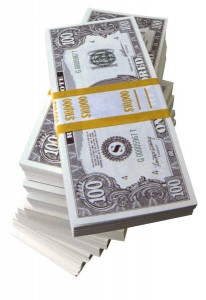Selling 101: Pricing
Deciding To Sell
Do I Need an Agent?
Cost of Selling
When is the best time to Sell
What do I need to disclose
Buy First or Sell First
Phase 2: Preparing Your Home
Initial Impressions Count
Basic Repairs and Maintenance
Mini Remodel Projects
Staging and Decorating
►Pricing Your Home◄
Utility Bills
Pre-Sale Inspections
Phase 3: Marketing Your Home
Letter To Buyer
Marketing
Professional Photography
What To Expect While On Market
Factors For Buyers
Showings / Previews
Phase 4: The Purchase Agreement
Purchase Agreement
What are Sellers Concesssions
What are Contingencies
Buyer’s Inspection
Phase 5: The Closing
Closing Costs Explained
Title Work
Appraisals/Underwriting
Utility Billing
Preparing For Closing
The Closing
 How does pricing your home affect the buyers?
How does pricing your home affect the buyers?
Many sellers, such as yourself, may want to price the home higher so that you can try to get the most out of your home. How does this really affect your bottom line? Do you really get more for your home if you price it higher? I will take a look at these questions and provide specific examples from my history as a Real Estate Agent on how pricing your home affects buyers.
There are several reasons that sellers want to price their home higher. Let’s take a look a a few of them: 1. Their house is better than others / worth more. 2. To have a higher net. 3. To leave room for negotiating.
It is usually difficult for sellers to look at their home objectively. This is usually because they have fixed many things, or upgraded / updated rooms such as kitchens or baths, or simply because there are so many memories in the home. But buyer’s are not looking for your memories, only how the house compares to other houses they are seeing. Try taking a step back and looking at how your home compares to others on the market. Go visit open houses and see what those houses are like. Just because you remodeled the kitchen to your specifications doesn’t mean it is universally appealing to everyone.
I will usually start off by performing a Comparable Market Analysis (CMA) on your home. With the CMA, I take into account the current market conditions, similar homes within a small radius, that have sold recently, current active homes that are on the market, and condition of these homes. Once I have determined a price range in which a knowledgeable buyer would purchase, we’ll cover this together so that you know what I think your home will sell for. I will always provide a range of pricing because the final sale price of a home is always subjective.
Price it Higher
I have heard it time and time again. Many sellers want to price it higher to leave room for negotiating. Or the seller wants to net more for their house than what my CMA shows. Let’s say my CMA shows me that the home would sell for $280,000 – $295,000. But the seller wants to list the house at $325,000 because the neighbor down the street sold their house for that. So we list their house for $325,000. Here’s what happens when buyers see it. The house will appear not as good as the other homes in the $325,000 price range. They will dismiss it as a possibility because it doesn’t have as much sqft or it isn’t as updated, or it has a smaller lot, or any number of reasons. They will pass it by and forget about it. Later, when you lower the price, I’ll reach out to the agents that have shown the property, and most of the time, often they will indicate that they already bought another house. In this situation the wrong buyers were looking at the house, and the right buyers for the house won’t be looking at it because it is not in the correct price range.
What will end up happening is that you’ll eventually sell for less than market value due to the days on market. When a home has many days on market, buyers will say “there is flexibility in the price” or “there must be something wrong with it.” Either way, after reducing and reducing over a period of time, you’ll end up lower than what you could have received if you priced it correctly from the start.
Price it at Market Value
Pricing the home at market value will generate a fair offer within a short time frame, possibly a week or two. We should be getting 5-7 showings really early on, and hopefully an offer within the first week. The right buyers will coming in to see the house, and it should sell within the first week.
Price it Below Market Value
One tactic to get a home to sell very fast is to price it slightly below market value. The buyers will all perceive this to be a good deal and will schedule a showing. The first day or two will have many, many showings, maybe 7-10 per day. This will most likely generate multiple offers in the first 2 or 3 days, with several offers coming above list price. This is of course the best scenario. Let the buyers decide the ultimate selling price with multiple offers. If your home is an upper bracket home, this may not work, since upper bracket homes take longer to sell than entry level or mid bracket homes.
Pricing it on the Bracket Line
Currently this situation has happened to my buyer multiple times. This particular buyer is looking up to $250,000. Some sellers are pricing the house at $259,900. This buyer is not seeing this house, nor other buyers that are looking up to $250,000. When the seller reduces to $249,900, they have a ton of showings, and multiple offers pushing the price higher than $250,000, possibly to $255,000. It would have been better for the seller to price it at $250,000 to begin with, and get the house sold in just a matter of a couple of days, possibly in multiple offers.
REAL LIFE Example #1:
There was a home that I listed after it expired (it was for sale for a while but it didn’t sell during the length of their listing contract). It originally listed for $365,000. After 30 days, they lowered to $345,000. After 60 more days, they lowered to $335,000. They had it on the market for another 4 months at $335,000. It didn’t sell.
I took on this listing and recommended some light staging and painting. I think they had spent $1500 on these items. We then listed the house for $315,000 and got a ton of showings, and 2 offers on the second day, and sold it. Before I tell you the sold price, let me say that I held an open house that weekend since it was already scheduled, and 5 separate people told me they would have made an offer that day, if it were still available. Needless to say, we sold it for higher than asking price! The price? $330,000. Now, the house didn’t sell at $335,000. The effect of pricing it higher at $365k, and then $345k, and then $335k is that they had a much longer time on market. Listing it at the correct price sold it in 2 days, rather than the 190 days it didn’t sell.
REAL LIFE Example #2:
Years ago, I had a listing that my market analysis showed a sale price of about $50,000. It was a small home that needed A LOT OF WORK to get it back into shape. Leaky pipes, walls with holes, junk everywhere. The seller wanted to list the home at $69,900. So I listed the home at 69,900. The seller didn’t want to lower the price, so it took 9 months, and we finally got a buyer that was willing to put a “low-ball offer” on the house. Their offer? $51,000. We sold it after sitting on the market for 9 months. It could have been sold in 2 weeks had we listed it in the correct value range.
REAL LIFE Example #3:
I had a seller that wanted to list a house for $225,000 when my market analysis showed it to be worth $200,000. The house was getting ready to be marketed late in our season, in October. I told them that we should price the home at $200,000 and get it sold quickly so that we won’t sit on the market over the winter. In October, the market starts slowing down dramatically, all the way through December and in to January and February. If we had started it higher at $225,000, we would have been lowering to $215,000 and $205,000 and $195,000, etc. We would have been following the market down and never “catch-up” to the market. It would probably have sat until February where it would have sold for $190k or less.
But pricing it at $200,000 from day 1, brought 8 showings in the first day, and 1 offer on the second day. I contacted the other showing agents and none of them were going to write an offer. A couple of the agents mentioned that if they wrote, it would have been for $180,000. The offer we received? $200,000. If there were multiple offers, we may have ended up slightly higher. But this example shows that houses really sell at market value.
REAL LIFE Example #4:
Recently I had a home in Richfield coming up for sale. I looked at the neighborhood and gave an opinion that the house would sell between $235k and $240k. We listed the house at $239,900 and had 18 showings on the first day with multiple offers within the first 2 days. One offer was $232,800 (240,000 – 3% closing costs), the second offer was $235,807 ($243,100 – 3% closing costs), offer 3 was $220,190 ($227,000 – 3% closing costs), and offer 4 was $239,900. We did take the highest offer, but they fell through. So we accepted the $239,900 offer. After negotiating an inspection issue, we ended up at a final sales price of $238,285.
Conclusion
Pricing does not affect the final sale price, unless of course you have it way out of the ballpark too high, or too low. But anywhere in the ballpark, the house is going to sell for the same amount, market value. The only affect pricing had was to lengthen the days it took to sell, with higher prices taking longer to sell, and possibly ending up with a lower final sales price.
